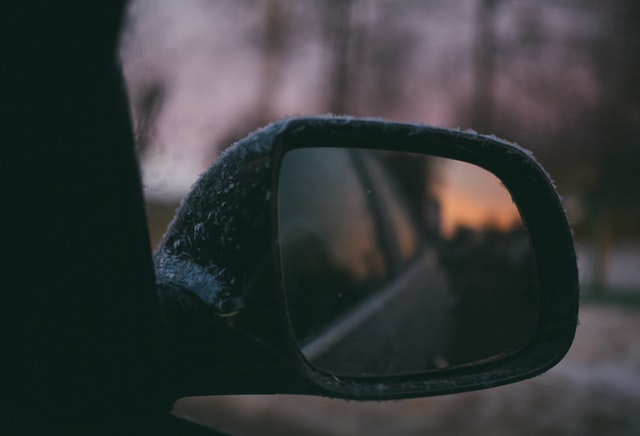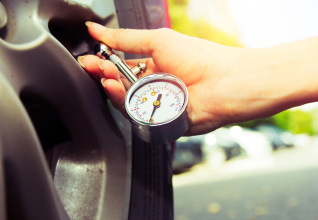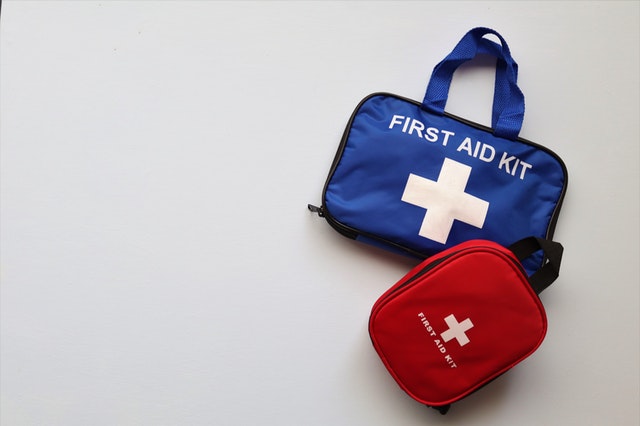It’s dangerous to assume that your car can handle all road conditions or severe changes in weather. Driving can be a lot more complicated in the winter, thanks to the colder weather, icy conditions, fog and heavy rain. So, it’s important to make sure that you and your car are ready.
Preparing your car for winter and autumn is about a few simple, proactive checks on its most important parts. Focusing on your battery, tyres, lights, and fluids can prevent the vast majority of common roadside issues during the colder months.
Before the weather turns, it is a good idea to have your vehicle fully serviced, but you can also perform these regular walkaround checks yourself to ensure it is safe for the road.
Winter Car Guide For Ireland
Tips For Getting Your Car Winter Ready

In winter, the colder temperatures can affect different parts of your car so it’s best to be proactive about it rather than waiting until something stops working.
Fuel Tank
Make sure before every journey that your fuel tank is topped up to prevent condensation from forming. This turns to water in your tank and can cause the risk of freezing if temperatures drop further. It is best to keep fuel tanks at least half full at all times to get ahead of this issue.
Lights and Bulbs
With fewer daylight hours, it’s important that all your car’s lights are clean and working correctly. Do a quick walkaround check of your headlights, indicators, brake lights and fog lights. to make sure they are working correctly. We would recommend keeping spare bulbs in the car in case your lights fail on a journey. Knowing how to change the bulbs is also helpful as all cars are different.
Windscreen Wipers
Check your wipers and wiper blades for signs of wear and tear and replace them if necessary. And make sure your vehicle is topped up with anti-freeze and screen wash to clear your windshield.
If you see frost or snow on your windscreen, use an ice scraper to remove it from your car. Avoid turning your wipers until you have de-iced the windscreen or you could be left with having to replace your windscreen wipers completely. Never use boiling water as it could crack your windscreen.
It is vital to check for any windscreen damage caused by stones or debris hitting your windscreen. Please take a look at our Windscreen Claims Infographic to get more insights into this.
Tyre Pressure and Depth
You are advised never to let your tyre tread depth go below 2mm. In the winter months, we recommend this to increase to 3-4mm. This depth will give you improved steering and braking in these unfavourable winter road conditions.
Next, you will want to make sure that you keep tyre pressure to the manufacturers recommended setting. An overinflated tyre can cause your car to slip across the road rather than grip it, which is extremely dangerous.

Oil Levels
In the colder weather engine, oil can thicken, making it even harder for your engine to start. Thinner engine oil makes it easier for your engine to start-up in cold weather. Your manufacturer’s manual will have all the relevant information on topping up your oil.
Coolant
Coolants or antifreeze helps to control the temperature of the fluids in your car and various parts of the engine. Your engine will not overheat or freeze this way. The majority of cars these days use long-life antifreeze, and you should never mix these with a different type of antifreeze. This could cause a lot of damage to your engine. If you don’t know what antifreeze is in your car, ask your car dealer or mechanic, and they’ll tell you.
Door Locks
To prevent freezing on your door locks, we recommend using WD-40 during cold weather. A lubricant such as Vaseline will help prevent the rubber seals on your car door from freezing.
Emergency Kit
In case you do get stranded in bad weather, having a winter emergency kit in your boot can be invaluable. The Be Winter Ready guide from An Garda Siochana provides an excellent checklist of items every driver should have when driving in winter. Your kit should include:
- Working torch
- Reflective triangle
- Warm Clothes
- First Aid Kit
- Antifreeze
- High vis jacket (1 per seat)
- Ice Scraper and de-icer
- Jump leads
- Cloth
- Phone Charger
- Water and Snacks
- Small shovel and tow rope (especially for rural drivers)
Driving In Winter
The most important advice from An Garda Síochána for driving in severe weather is to ask yourself if the journey is absolutely necessary. If it is not, consider delaying your trip until the conditions improve. And always follow any weather warnings or advice from Emergency Services not to go out.
If you do need to drive in severe weather, you will need to adapt your driving to suit the conditions. You should use your dipped headlights so that other road users can see you at all times.
On wet, icy or snowy roads, it can take longer to stop so slow down, brake early and gently and leave a much larger gap between your car and any vehicles in front. Avoid any harsh braking or steering, and remember not to brake and steer at the same time if you can help it.
When the temperature drops, watch out for “black ice,” which looks like a harmless wet patch but is dangerously slippery, and is often found in sheltered or shaded areas under trees.
Most modern vehicles are equipped with safety technology such as Electronic Stability Control (ESC) or Anti Lock Braking System (ABS) which can help with driving in winter conditions; but remember these are just tools and you shouldn’t overestimate your car’s ability to handle severe weather.
Before setting out on a journey, check the local and national weather forecasts for updates, and keep an eye out for any traffic news, road closures or detours that may be in place by local authorities and Gardaí.
Key Tips For Driving In Winter
- Do not drive on icy roads unless the journey is essential.
- Make sure you can see through all windows before driving off.
- Check that all car lights are working.
- Keep a distance from the car in front of you.
- Slow acceleration and braking are essential for driving on snow and ice-covered roads.
- Regularly check your fuel levels.
- Never overtake on icy or snowy roads.
- When going downhill, use the third or fourth gear. When turning a corner, use a lower gear.
- Pay attention to weather forecasts and warnings and listen to advice from An Garda and the RSA.
For more information on winter driving safety, visit the Road Safety Authority website.
Get Your Car Winter Ready
FAQs
Looking to Save On Your Car Insurance?
At KennCo, our car insurance cover offers competitive rates and valuable benefits, including a replacement car as standard. Get peace of mind knowing you’re fully covered.
Get a Secure Quote Today

